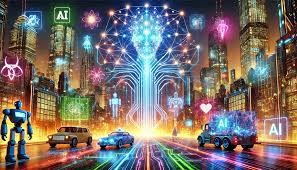In the fast-paced world of artificial intelligence, the Transformer model has long stood as a towering landmark — a skyscraper of innovation that reshaped natural language processing, computer vision, and beyond. But as research evolves, the horizon is shifting once again. The world of AI is now looking beyond the Transformer, toward a new era of architectures that promise greater efficiency, adaptability, and reasoning capabilities.
Like an explorer leaving a once-thriving city to chart unknown territory, researchers are venturing into post-Transformer designs — models that redefine how machines learn, understand, and generalise.
The Limits of the Transformer Era
Transformers revolutionised AI with their self-attention mechanism, allowing models like GPT, BERT, and T5 to grasp complex relationships between words, images, and sounds. Yet, even the most advanced structures have their flaws. Transformers demand enormous computational power and vast amounts of data — luxuries not every organisation or researcher possesses.
The self-attention layers, while powerful, scale poorly as the sequence length grows. Memory bottlenecks and latency issues have become increasingly apparent as model sizes balloon into the hundreds of billions of parameters. The result? An urgent need for models that think faster, consume less, and adapt better.
This shift is not just technical — it’s philosophical. The goal now is to build AI systems that learn like humans: contextually, efficiently, and continuously. Professionals who wish to understand these breakthroughs often benefit from formal learning, such as an artificial intelligence course in Hyderabad, where foundational and emerging AI concepts are explored in depth.
Sparse and Efficient Models: Doing More with Less
In the quest to move past Transformer limitations, one key direction has been sparsity. Instead of having every part of the network communicate with every other part — as in dense attention mechanisms — sparse models limit connections to only the most relevant elements.
This idea mirrors how the human brain works: when we read a sentence, we don’t process every word equally; we focus on the crucial ones that carry meaning. Models like Sparse Transformers, Longformers, and Reformers follow this principle to process long sequences with reduced computational cost.
Meanwhile, Mixture-of-Experts (MoE) architectures divide tasks across specialised sub-networks, activating only those relevant for a given input. This enables models to scale in capability without an equivalent rise in computation.
These innovations suggest a future where AI models are not just large but also smartly efficient. Understanding such developments through an artificial intelligence course in Hyderabad provides learners with the technical fluency to build and optimise such intelligent systems.
Retrieval-Augmented and Memory-Based Systems
One of the emerging trends in post-Transformer design is the integration of retrieval mechanisms. Rather than storing all knowledge within their parameters, new models can access external databases dynamically — a technique known as retrieval-augmented generation (RAG).
This hybrid design merges the best of both worlds: the reasoning capability of neural networks and the factual accuracy of database lookups. Such architectures also reduce the need for constant retraining, as external data sources can be updated independently.
Similarly, memory-based models aim to give AI something akin to “working memory.” Systems like RETRO and MEMO recall relevant past information during inference, allowing the model to reason over time and context rather than re-learning the same concepts repeatedly.
These developments push AI closer to long-term cognition — a step toward true machine intelligence.
Graph and Modular Architectures: Beyond Sequential Thinking
Another breakthrough area lies in graph-based and modular AI architectures. While Transformers process data sequentially, graphs allow models to represent relationships in a more natural, interconnected form — perfect for reasoning about complex systems like social networks or molecular structures.
Graph Neural Networks (GNNs) and modular frameworks treat data as nodes and relationships as edges, mirroring the way humans associate ideas. This approach fosters explainability and interpretability, critical for deploying AI responsibly.
Moreover, modular systems can dynamically reconfigure themselves to handle different tasks — a glimpse of AI models that evolve like living organisms.
The Road Ahead: Toward More Human-Like Intelligence
The post-Transformer landscape is not about abandoning the old but expanding the possibilities of the new. Future AI systems are expected to combine multiple paradigms — attention mechanisms, retrieval, modularity, and memory — to create adaptive, reasoning-driven architectures.
This evolution aligns with a broader vision: building machines that learn and interact more naturally, moving closer to general intelligence. The transition also highlights a growing need for ethical considerations, as increasingly autonomous models must balance power with accountability.
Conclusion
The AI field is standing at the edge of a new frontier. Transformers opened the gates, but the next generation of models promises to walk through them — lighter, faster, and more capable of reasoning. These architectures will not only process data but also understand it, enabling breakthroughs in medicine, science, education, and creativity.
For aspiring professionals, participating in structured learning programs provides a solid foundation to effectively engage with evolving technologies. The future of AI is not solely about scale; it’s also about developing intelligence that reflects human insight, guided by innovation and responsibility.



